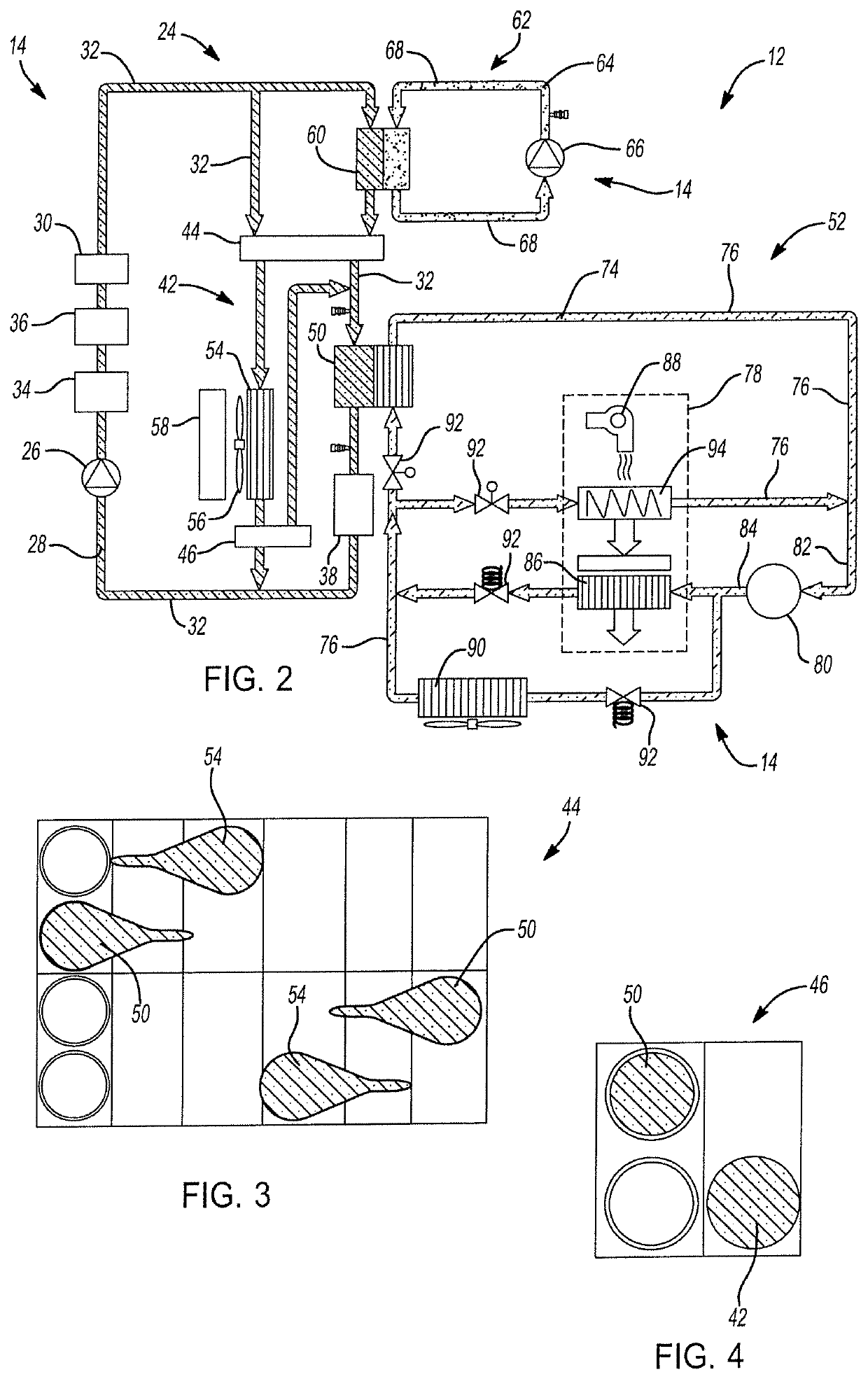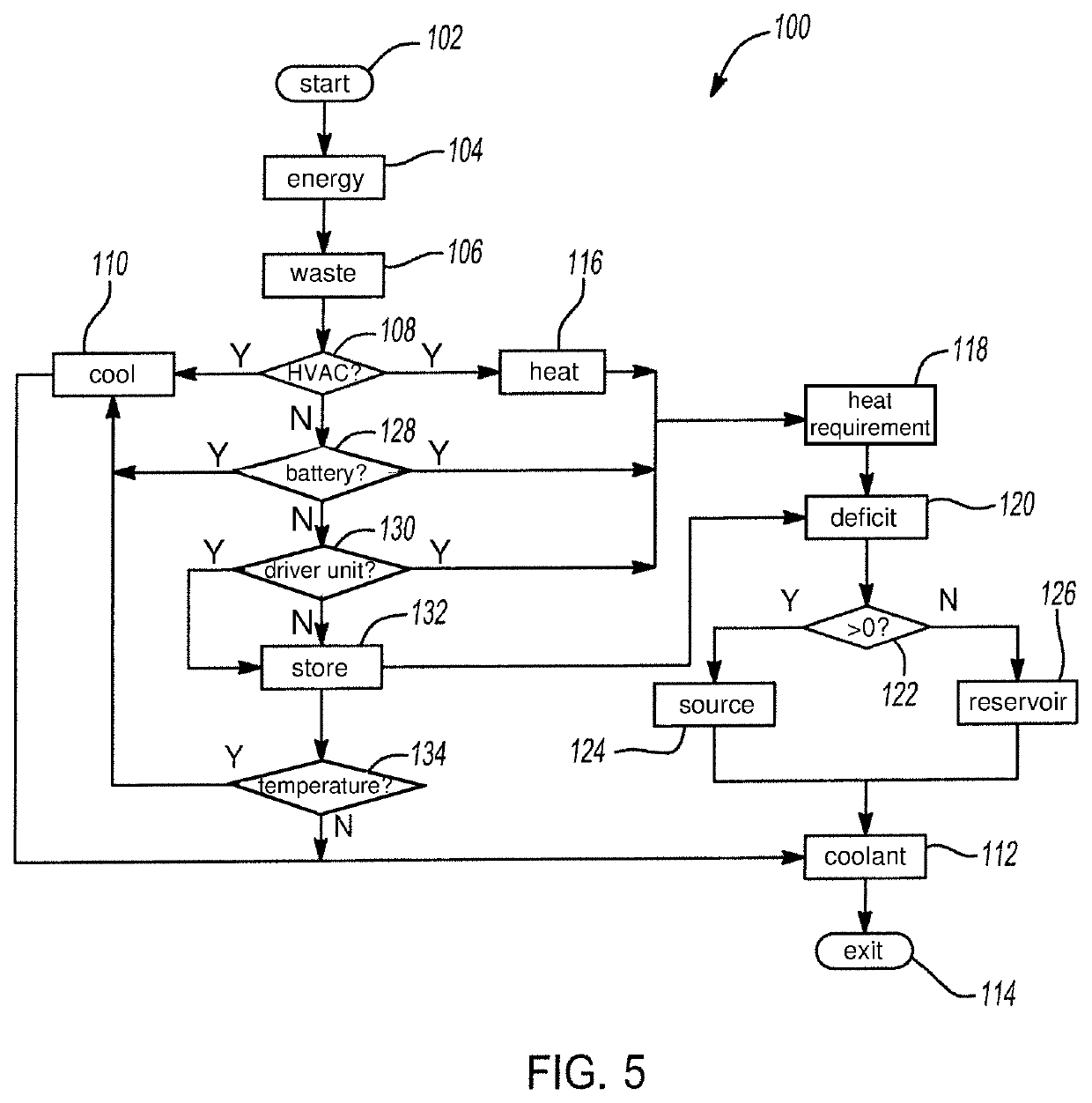Vehicle thermal system architecture
a technology for thermal management systems and vehicles, applied in the direction of gearing details, battery/fuel cell control arrangements, transportation and packaging, etc., can solve the problems of thermal energy surplus, relative complex series of circuits, and large thermal energy production
- Summary
- Abstract
- Description
- Claims
- Application Information
AI Technical Summary
Benefits of technology
Problems solved by technology
Method used
Image
Examples
Embodiment Construction
[0024]Example illustrations herein are directed to a vehicle and thermal energy management system that allow circulation and accumulation of thermal energy to meet various needs of the vehicle, such as heating or cooling of a passenger compartment of the vehicle, or of vehicle components themselves. Example illustrations may circulate thermal energy via a relatively reduced number of thermal fluid loops, thereby simplifying operation of the thermal energy management system, and facilitating storage of otherwise less useful or “low-quality” thermal energy. The storage of this “low-quality” thermal energy in, for example, various heat sinks of the vehicle may allow thermal energy to be reused instead of rejected from the vehicle.
[0025]Referring to FIG. 1, a motor vehicle is shown and indicated generally by reference number 10. While the motor vehicle 10 is depicted as a car, it should be understood that the motor vehicle 10 may be a car, a truck, an SUV, a van, a semi, a tractor, a bu...
PUM
 Login to View More
Login to View More Abstract
Description
Claims
Application Information
 Login to View More
Login to View More - R&D
- Intellectual Property
- Life Sciences
- Materials
- Tech Scout
- Unparalleled Data Quality
- Higher Quality Content
- 60% Fewer Hallucinations
Browse by: Latest US Patents, China's latest patents, Technical Efficacy Thesaurus, Application Domain, Technology Topic, Popular Technical Reports.
© 2025 PatSnap. All rights reserved.Legal|Privacy policy|Modern Slavery Act Transparency Statement|Sitemap|About US| Contact US: help@patsnap.com



